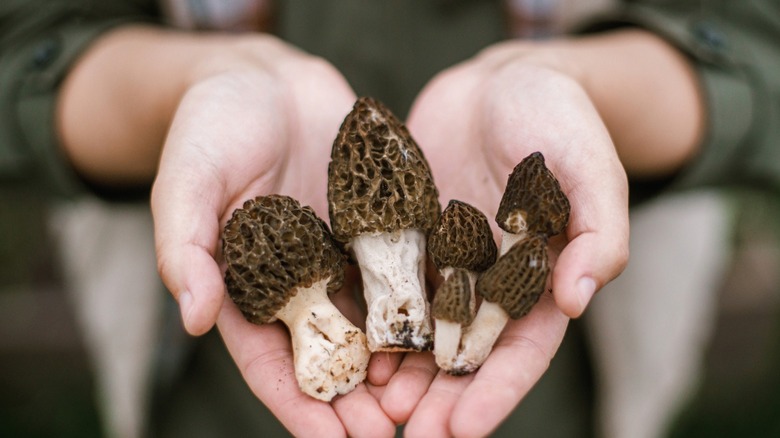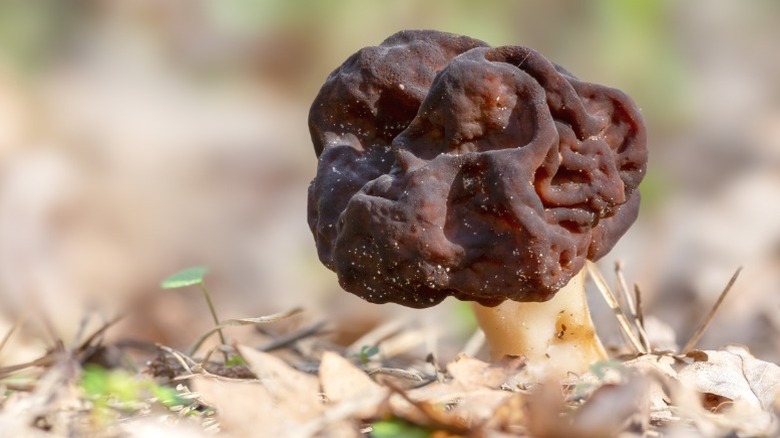The Danger Of False Morel Mushrooms That You Can't Ignore
Foraging for mushrooms may be seen as a somewhat twee activity, but it is not for the faint of heart. Some varieties are perfectly edible, even delicious, and then others will ravage your internal organs if you so much as lick one. And to make matters worse, sometimes an edible and a poisonous mushroom will appear to be almost identical to each other, with experience and careful study required to discern their differences. This is the case with morel mushrooms, which have a dangerous doppelganger that can cause you serious harm or even kill you.
Morcella esculenta, also known as the common morel or the true morel, is prized for its culinary uses. A small fungus with a cap that takes some finesse to fully clean, morels are delicious sautéed or in sauce, and are often used in French cuisine. Because they're mostly found in the wild with only a short growing season, they are expensive, and those who gather enough of them will surely make a pretty penny. But do not, in your haste, carelessly pick anything that vaguely resembles a morel, or you might end up with the treacherous false morel. While true morels can be toxic if consumed raw (as one Instagrammer learned the hard way), false morels, or gyromitra esculenta, still contain toxins after cooking. These toxins can lead to vomiting, diarrhea, migraines, and even death. At one point, the false morel was responsible for 23% of Polish mushroom fatalities.
How to tell the difference between true and false morels
Although true morels and false morel mushrooms have certain similarities, it's easy for an experienced forager to tell them apart. True morels have a pitted cap, meaning there are little indents or holes in them. False morels, on the other hand, have a cap that resembles a crumpled-up piece of paper, or maybe one of those umeboshi plums from Japan. The stem is also a major diverging point for these two fungi. The stem of a true morel is hollow, while the stem of a false morel is solid almost all the way through; as a result, false morels are usually a good deal heavier than true morels.
Mind you, there are a number of different species that fall under the umbrellas of "true morels" and "false morels," and some of them may violate these rules. For instance, verpa bohemica, or the "early morel," does not have a hollow stem, but is classified as a true morel and is perfectly safe to eat. But for the purposes of this article, the focus is on gyromitra esculenta because that's one of the only toxic mushrooms growing near true morels that also resemble them.
If you take the proper precautions with the true, non-poisonous kind, the most you have to worry about is how to store your morel mushrooms so they don't expire so quickly.

